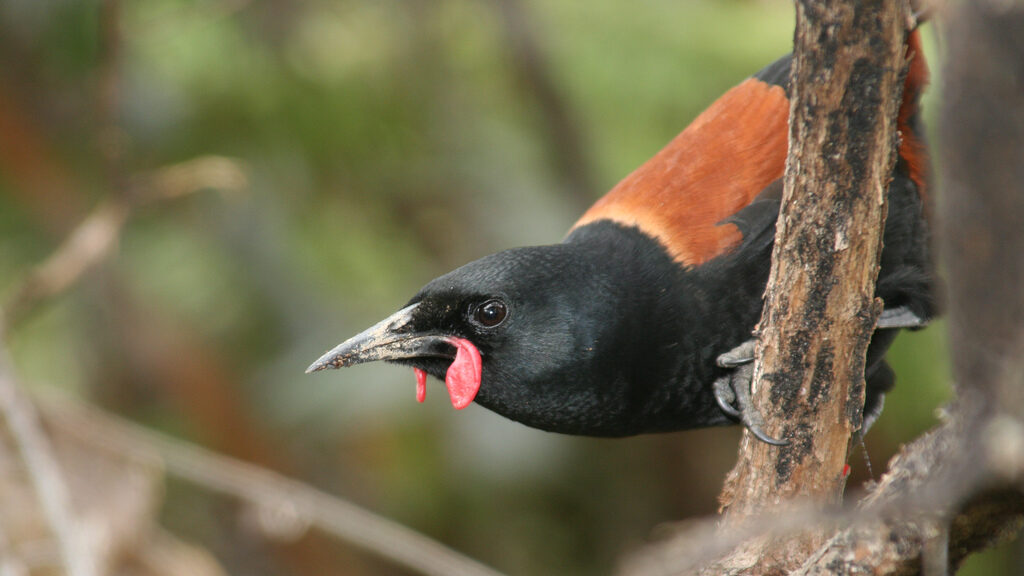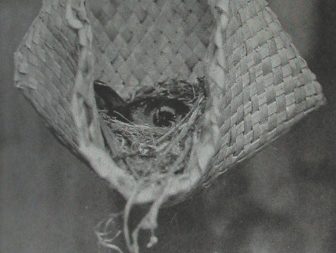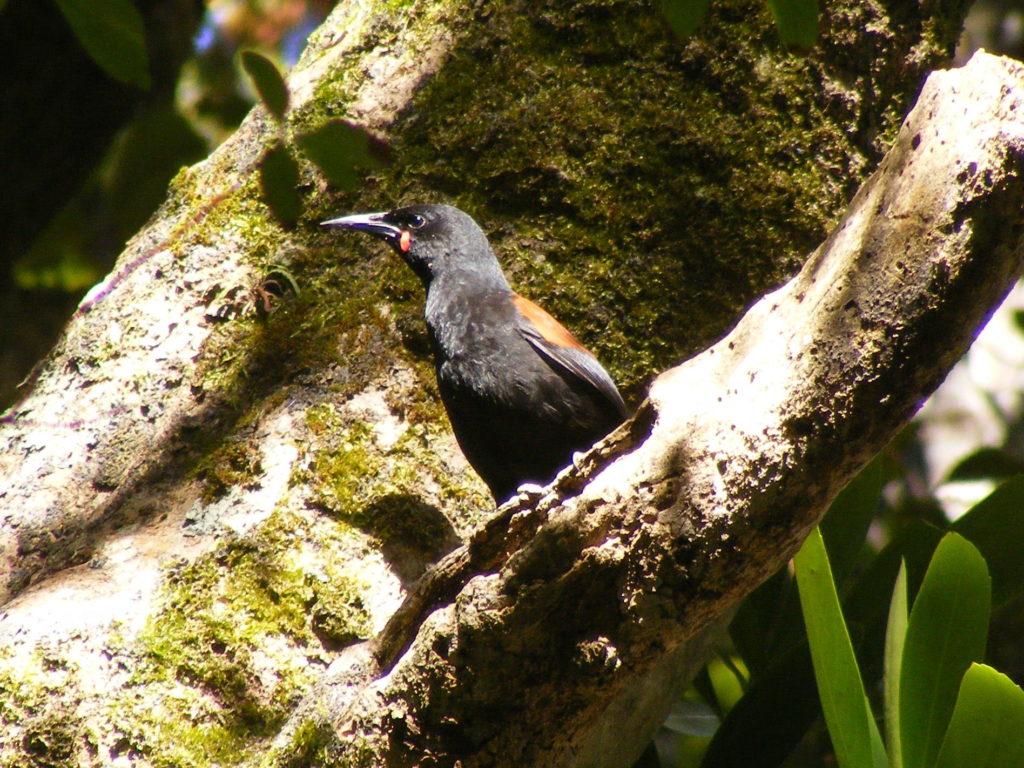Tīeke have a legendary reputation as guardians, weather-predictors, fortune-tellers and guides, although their saddle-like markings are said to be a sign that they once displeased Māui-pōtiki and were marked when he grabbed them with a hot hand and singed their feathers.

Long ago, when tīeke (saddlebacks) were common, they often followed large flocks of whiteheads through the forest, snapping up insects disturbed by the whiteheads that were too big for them to eat. A pair of tīeke or even 4 or 5 of them might follow a flock of smaller whiteheads, almost as if looking after the little birds. Perhaps that’s how tīeke came to be considered guardians by Māori.
When alarmed, tīeke give sharp, rapid cries – and their Māori name, tīeke, is an imitation of that cry. Sometimes they’re also known as tiaki – a similar sounding word that usually means ‘guard/keep watch’.
Tīeke are energetic bathers, sending water in all directions – giving rise to a Māori saying that is used when something is being done to excess: me he wai tā tīeke, ‘like the water spread around by a saddleback’.

Watch a video of a saddleback bathing.
Tīeke, the guardians were believed to guard ancient buried treasure and, when the mythical Mataatua canoe set sail from Hawaiki, a pair of tīeke are said to have travelled with the crew and guided them to Aotearoa. Their names were Mumu-au (the female) and Takere-tou (the male) and they were left at Repanga (Cuvier Island). These wise old birds are said to live there still and to foretell the weather by their cries and how they fly. The strange call of one is a sign of good weather, whilst the shrill cry of the other is a warning of storms to come.
Saddlebacks were also believe to be fortune-tellers. A party of travellers hearing a saddleback cry on their right hand (lucky) side knew that those they were visiting would welcome them with feasting. A cry from the left (unlucky) side warned of possible murder.
Tīeke were named ‘saddlebacks’ by the early European settlers, because of the chestnut-coloured ‘saddle’ feathers on their back. Their orange wattles identify them as wattle-birds, relatives of the huia and the kōkako.
Early ornithologist, Guthrie-Smith reported on the dedicated parenting of a female bird sitting on one of 5 nests he was observing:
“The fifth nest, also in deep shade, was built into an open flax kit suspended from a nail fastened to an upright board in a Māori hut. The outermost materials of the nest consist of rootlets and portions of fronds of aspidium aculeatum, the latter so affected by exposure and age as to be easily tweaked into the desired circular form. On this rough base and outer edging rest quantities of narrow grass-tree leaves; on them are piled, deep and warm, the shining scales of unrolled tree-fern fronds.”
“The nest built in a flax kit had a single egg in it on the ninth; on the 10th there were two eggs; on the evening of the 30th the chicks were about to emerge. On that evening the hen was so wrapt in the ecstasy of brooding that she allowed me to lift the kit from its nail and carry her forth still sitting to show my companions. She appeared to be perfectly unconcerned, her plumage fluffed out to the utmost, her side feathers made to cover completely the outer margin of the nest. It was a critical period when greatest warmth was required. The beak of one chick already protruded from the shell; the second egg was chipped. Unalarmed, she was returned to her comfortable quarters within the dry gloom of the hut.”
There are 2 species of tīeke, North Island saddleback (Philesturnus rufusater) and South Island saddleback (P. carunculatus). The more endangered of the two species is the South Island saddleback, with only around 650 birds in existence. The young of North Island birds similar to adults but South Island young are plain brown.

Saddlebacks were once widespread, but began to decline in the mid-19th century due to forest clearance and introduced predators such as ship rats, feral cats and stoats. Eventually both species were close to extinction. South Island saddlebacks were limited to three islands: Big South Cape, Pukeweka, and Soloman Islands (near Stewart Island), while the North Island species was restricted to Hen Island in the Hauraki Gulf.
Then things got even more precarious for South Island tīeke. In the early 1960s, a boat accidentally brought ship rats to the largest of its three island refuges, Big South Cape Island. The rats quickly spread to the other two islands.
Early in 1964, the NZ Wildlife Service had successfully transferred some North Island saddlebacks from Hen Island, Hauraki Gulf to nearby Whatapuke Island – possibly the first time the translocation of a species had been successfully carried out. Now they scrambled to rescue the South Island tīeke, moving 36 birds from their rat-plagued islands to predator-free ones. The current population of over 700 birds are all descended from the survivors of those 36 tīeke rescued in 1964.
North Island tīeke are now resident on 19 islands and in a favourable position to survive, according to the Department of Conservation. The South Island species is on 11 smaller islands (500 ha) but its tiny founding population leaves it vulnerable to inbreeding. There are also mainland North Island saddleback populations at five fenced sanctuaries, where they have been re-introduced from ‘lifeboat’ island populations: Zealandia Ecosanctuary, Bushy Park Sanctuary, Tawharanui Regional Park, Sanctuary Mountain Maungatautari and Rotokare Scenic Reserve.
Zealandia received the first translocation of tīeke to a mainland sanctuary site in 2002. The birds bred successfully and in October 2014 volunteers discovered a nest outside of the sanctuary’s predator proof fence – the first sign of tīeke nesting outside a sanctuary, on mainland New Zealand, for over a century.
References:
The Natural World of the Māori by Margaret Orbell
NZ Birds
Department of Conservation

